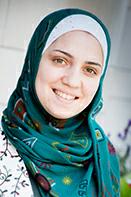Seminar: ENE 590 Summer Presentations
| Event Date: | September 1, 2016 |
|---|---|
| Speaker: | ENE 590 Graduate Students |
| Time: | 3:30 - 4:20 PM |
| Location: | Armstrong B071 |
| Priority: | No |
| School or Program: | Engineering Education |
| College Calendar: | Show |
Hoda Ehsan, Graduate Student
Museum Education: Designing Effective Exhibits
Learning experience is described by the transaction that takes place between individual learners and the instructional environment (Parrish, 2009). While people experience learning differently, effective learning experiences have some qualities in common. The qualities of learning experiences include cognitive, emotional, aesthetic and social (Wilson, 2005). These qualities impact the way people learn in different settings. Thus considering them is necessary when designing an educational instruction.
In order to design a successful exhibit, designers may adopt different approaches and focus on different factors that are consistent with the objectives of the exhibit. Bitgood (1994) listed seven common approaches for designing exhibits which are aligned with the learning experience qualities. The approaches are Subject Matter, Aesthetic, Hedonistic, Hands-on, Realistic, and social facilitation. Bitgood (1994) emphasized that designers usually use more than one strategy when they design an exhibit based on their preference and the nature of exhibits. To meet the goals and objectives of the exhibit, designer should know more about the factors that each approach support and consider their possible impact on audiences’ learning.
Through this course, first I conducted a literature review to describe, support and criticize these seven approaches. Second, I created a rubric for designing effective exhibits based on the seven approaches. Then, I visited Imagination Station and evaluated some of their exhibits using the rubric.
BIO | Hoda is a Ph.D. students in the School of Engineering Education, Purdue. She received her B.S. in mechanical engineering in Iran, and obtained her M.S. in Childhood Education from City College of New York (CUNY-CCNY). She worked as a junior designer in a manufacturing company in Iran. She also was a member of engineering team to establish a new brand school based on technology in Iran, and then became the program director of the school for two years. She taught (including her student teaching) in a New York City elementary school for 1 year and half. Her research interests include designing informal setting for engineering learning and promoting engineering thinking in students with disabilities in informal and formal settings. She is now a graduate research assistant in STEM+C project.
Nathan Hicks, Graduate Student
Consistency of Standards-Based Grading in First-Year Engineering
Standards-based grading has become increasingly accepted and adopted in higher education. Leading this trend, instructors of Purdue’s ENGR 132 course have spent the last four years developing learning objectives and standards-based grading rubrics; however, with the large number of undergraduate and graduate teaching assistants and course instructors, the fidelity of application has not been sufficiently investigated. This study explored the extent to which ENGR 132 instructional team members faithfully apply standards-based grading rubrics and possible explanations for the inconsistencies identified.
BIO | Nathan is an Engineering Education Ph.D. student. He is advised by Dr. Heidi Diefes-Dux and works with Dr. Kerrie Douglas. After obtaining his B.S. in Materials Science and Engineering from the University of Florida in 2008, he spent three years teaching a variety of STEM-related courses at Gaither High School in Tampa, Florida. He completed his M.S. in Materials Science and Engineering from the University of Florida in 2015 under the tutelage of Dr. Elliot Douglas, studying how undergraduate engineering students use critical and reflective thinking in summer research experiences.
Tingxuan Li, Graduate Student
Assessments in K-12 Engineering Education
This ENE 590 helped me gain understanding in engineering education. In particular, I gained the insights on how engineering is being integrated into elementary and middle school classrooms. In my presentation, I will discuss existing assessment tools in measuring students’ engineering design learning outcomes as well as the potential use of assessment in relation to the instructional sensitivity.
BIO | Tina is a doctoral student in College of Education. Her research interest is educational measurement. She is currently a research assistant under the supervision of Dr. Kerrie Douglas. Prior to join the engineering education team, she was a graduate assistant at Purdue Discovery Park. In addition, she was a summer pre-doctoral fellow at the Center of Data Analysis and Computational Research in Educational Testing Service (ETS, Princeton, NJ) where her primary responsibility was to model timing data collected from the National Assessment of Educational Progress (NAEP)- - Technology and Engineering Literacy (TEL) assessment.



